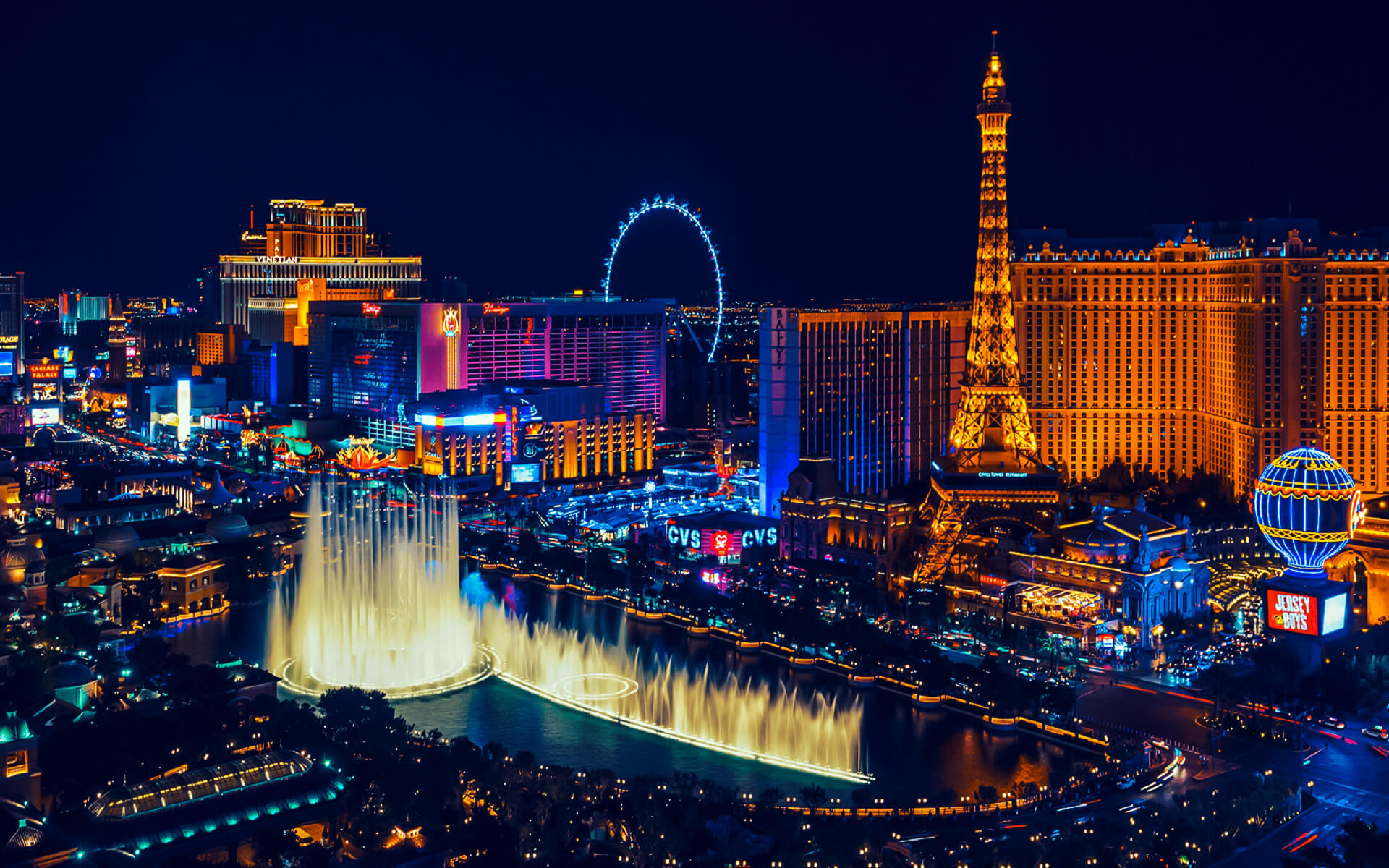Las Vegas is the state’s biggest city, located in the heart of the southern Nevada desert. Las Vegas and its neighboring cities, dubbed Sin City, are famous for its mega-casino resorts, which are often lavishly furnished with names and themes evoking romance, intrigue, and exotic places. Visitors will discover a variety of amusements and entertainment along the brilliantly illuminated Strip, including circuses, stage acts, thrill rides, erotica, exotic animals, fine dining restaurants, nightclubs, shopping, and extravagant fountain displays, to mention the age-old appeal of gambling and drinking.
Tourism, gambling, and conventions are the key drivers of the Las Vegas economy, which in turn fuel the retail and restaurant sectors.
The casinos and hotels are the primary attractions of Las Vegas, however other attractions have started to appear in recent years.
The majority of casinos in the downtown area are situated on the Fremont Street Experience, with the exception of The Stratosphere. Fremont East, next to the Fremont Street Experience, received variances to enable bars to be closer together, comparable to San Diego’s Gaslamp Quarter, with the intention of attracting a different clientele than the Strip.
CULTURE
The city is home to several museums, including the Neon Museum (which houses a large collection of historical signs from Las Vegas’ mid-20th century heyday), the Mob Museum, the Las Vegas Natural History Museum, the DISCOVERY Children’s Museum, the Nevada State Museum, and the Old Las Vegas Mormon State Historic Park.
The city has a sizable Downtown Arts District, which is home to several galleries and events, including the annual Las Vegas Film Festival. “First Friday” is a monthly event that features arts, music, special presentations, and cuisine in a portion of downtown Las Vegas known as 18b, The Las Vegas Arts District. The event also takes place in the Fremont East Entertainment District.
The Thursday before First Friday is dubbed “Preview Thursday” in the arts area. This nighttime event celebrates the district’s latest gallery shows.
The Las Vegas Academy of International Studies, Performing, and Visual Arts is a Grammy-winning magnet school in downtown Las Vegas.
The Smith Center for the Performing Arts is located in Symphony Park in downtown. Broadway productions and other major touring attractions, as well as symphonic, opera, ballet, choir, jazz, and dance acts, are presented in the world-class performing arts facility.
UNDERSTAND
Las Vegas is a relative newcomer in comparison to other American cities, including those in the western United States. It was formed in 1905 and remained a very tiny community for many years. However, a series of important events in the early to mid-twentieth century rocketed Las Vegas to popularity and established the stage for its development into what it is today. The first was the neighboring Hoover Dam’s construction from 1931 to 1936, which drew thousands of laborers to the region. The second was Nevada’s legalization of gambling in 1931, which resulted in the creation of casinos and speakeasies, establishing Downtown Las Vegas as an entertainment destination for Hoover Dam employees.
The magnificent El Rancho Vegas resort debuted in 1941 on what would become the Las Vegas Strip, during significant expansion in the local gaming industry. This was followed by Benjamin “Bugsy” Siegel’s Flamingo Hotel in 1946, ushering in an era of construction booms and one-upmanship. Additionally, this would establish a precedent for organized criminal participation in the Nevada casino business. While government rules and enforcement, as well as investments by established firms, have effectively eliminated mafia participation today, the building boom continues with the construction of ever-more complex resorts and attractions.
The city is planned out in the following manner: Both Main Street and the numbered streets are north-south roadways, beginning with Main Street in the west. Main Street is the location of the bus terminal. Downtown is home to multiple hotel-casinos, as well as the “Fremont Street Experience,” a pedestrian promenade packed with casinos, shops, and restaurants at Fremont Street’s western terminus. The “Strip” (Las Vegas Boulevard South) begins a few miles south of downtown. It is a north-south roadway dotted with major casino-hotels, retail malls, and several other attractions. The massive Stratosphere Tower marks the Strip’s northern terminus. City buses travel frequently up and down the Strip, connecting it to downtown. The Las Vegas monorail and convention center are situated directly east of the Strip, while the University of Nevada at Las Vegas (UNLV) is somewhat farther east on Maryland Parkway. The airport is located on the Strip’s southern end.


